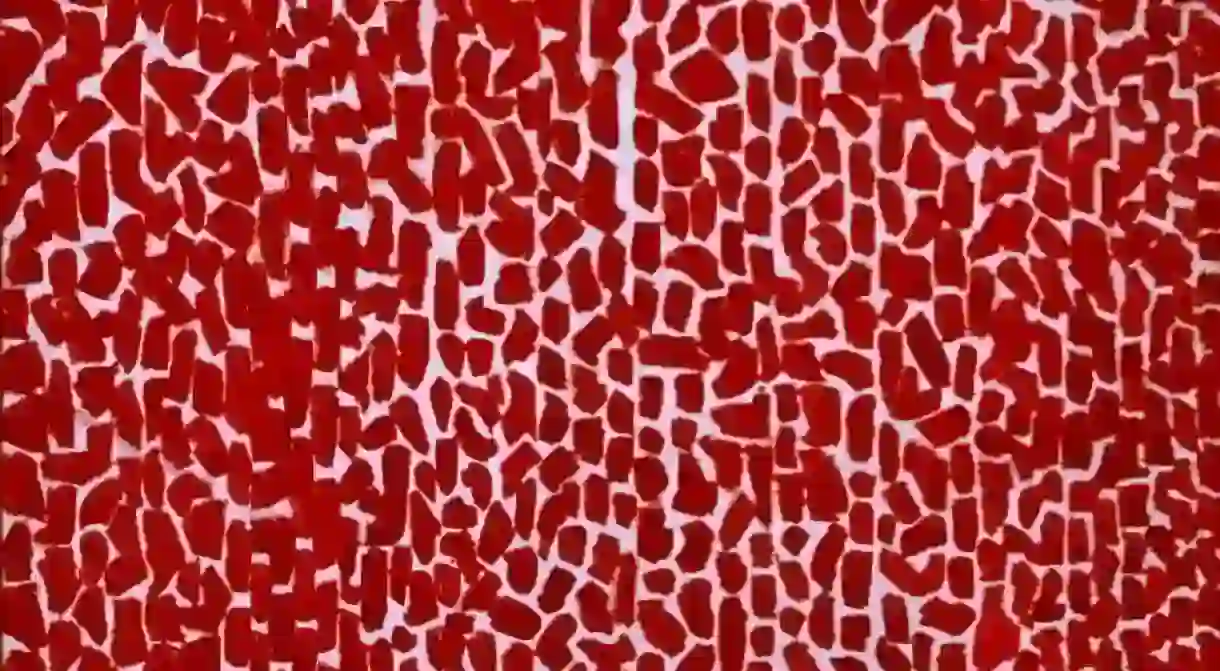Abstract Artist Alma Thomas Remembered

Born in 1891, Alma Thomas was a talented African American artist, based in Washington, D.C., who reinvented the field of abstract expressionism. She employed color field painting, and is remembered for her influence on the Washington Color School, although she is scarcely mentioned in its historical narratives.
Thomas expressed an affinity for art in her youth, and she spent years embracing creativity as a kindergarten teacher. She then attended Howard University to study home economics, but she switched her major to fine arts while there. In 1924, she became the university’s first student to graduate from the fine arts program. She returned to teaching, this time at a junior high school, where she launched a community arts program. She proceeded to earn her masters in Art Education at Columbia – a time when both her race and gender were still stigmatized in the world of higher education. But Thomas always prevailed; she had a determined spirit and a penchant for learning.

Her early paintings were representational, later devolving into the abstract. She didn’t reach critical acclaim until late in life, after she had retired as a teacher and enrolled in art classes at American University. There, in the late 1950s, she learned about abstract expressionism and color field painting under the guidance of Jacob Kainen – she was 70 years old at the time. Inspired by the New York School, she created masterpieces in her kitchen, and became fascinated by color and composition.
Color field painting is marked by large planes of one dimensional color, often in rigid and geometric shapes. The resulting effect is flat planes of uninterrupted color that stretch across the canvas. Like other abstractionists, instead of depicting an image, color field artists sought to make the canvas act as the image itself.
In 1966, her work was displayed at Howard University’s Gallery of Art. She created a series of abstract paintings inspired by nature for the exhibit, which she dubbed Earth Paintings. She believed in the power of abstraction to transcend political and historical concerns, and she instead focused on highlighting the natural world and art in its purest form. She wished to convey joy.

Critics have compared her works to Byzantine mosaics and Georges Seurat’s pointillist paintings. Thomas would frequently leave D.C. to drive into its surrounding rural areas, soaking in inspiration of light and atmosphere from the countryside. Wind And Crepe Myrtle Concerto (1973) is considered one of the most minimalist color-field paintings ever created.

Thomas died in 1978, but her work now adorns the White House’s walls. Resurrection was the first artwork displayed as part of the permanent collection in the White House to be done by an African American woman – in the same rooms which are inhabited by the house’s first African American occupants. Her art was neither radical nor passive in a political sense, but merely hoped to stand alone as art. Resurrection conveys a message of unity and hope, Obama’s famed platform, even as its days draw to a close.
‘Creative art is for all time and is therefore independent of time. It is of all ages, of every land, and if by this we mean the creative spirit in man which produces a picture or a statue is common to the whole civilized world, independent of age, race and nationality; the statement may stand unchallenged.’ – Alma Thomas














